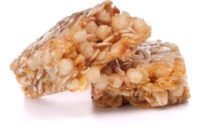Food and beverage manufacturers had to get creative in the midst of a virus causing large losses of domestic poultry. The avian influenza virus, also known as bird flu, infected much of the Midwest flocks, which resulted in drastic egg shortages and significant price spikes.
In order to continue product formulation and distribution, the virus forced many food and beverage manufacturers to examine their egg dependency and seek alternatives for partial and full egg replacements that offered equal nutritional value and function. This process can be challenging due to the high functionality egg proteins possess.
The key to a successful substitution is replicating the application’s needed functionalities, normally provided by eggs, with the correct combination of ingredients. The supplier of the egg replacer can be relied on to help shorten and simplify the research and development process. But first, the application must be understood.
Best applications for reformulation
Eggs contribute important qualities in the finished products of multiple applications. Bakery products are a primary concern because of their reliance on eggs to produce foods that are edible and pleasing. Eggs provide leavening, viscosity, tenderizing, textural properties and volume as well as color, flavor and nutrition to bakery items.
Foods such as sauces, creamy soups and dressings use eggs for emulsification, viscosity and sometimes as a thickener. Other foods like sausage, meat and fish are under pressure to find egg replacers because of the high demand for those foods. Without the functional properties provided by eggs, formulators may struggle to develop the highly consumed foods that rely on those very benefits.
The challenge lies in finding an egg substitute that will achieve the same standards. Unfortunately, egg replacers will not always mimic every functional property of an egg without the addition of other ingredients. However, this opens an opportunity to use egg replacers to bring nutritional and customizable versions of popular applications to market even after the egg shortage.
Whey proteins as an egg substitute
U.S. whey proteins give food and beverage manufacturers the ability to alter their formulas to easily align with the needs of a variety of applications. Whey proteins are a high-quality protein naturally found in milk that offers a clean label, potential price advantages and nutritional value.
The benefits of utilizing whey proteins are extensive. They can be stored dry to eliminate the need to thaw or refrigerate, and they allow the removal of many microbiological issues associated with fresh eggs. Also, whey proteins provide many of the same properties an egg provides, such as surface browning, structure, emulsification, improved volume and texture, and better shelf life.
There are two main types of whey proteins: whey protein concentrate (WPC) and whey protein isolate (WPI). WPCs are available in protein concentrations of 34%, 60% and 80%, and can be customized to meet specific requirements. The 60% and 80% concentrations are often called reduced-lactose whey. WPIs have 90% or more protein and are used in low-carb, high-protein products. WPIs are used less often, mostly due to cost.
When replacing an egg, the formulation needs to be altered based on many factors. The type of egg being replaced, fresh or dry, the overall percentage of egg used in the application, the total amount of protein being replaced and the type of whey protein used all need to be considered.
Eggs must be replaced on an equal protein basis, as dry egg has more protein than fresh egg. The liquid amount also affects substitution. The addition of solids and additional water may be needed to replace any liquid lost. Routinely, each product must be carefully analyzed to vary the egg replacement formula as needed.
Visit bit.ly/WheyProteinAsEggReplacer for more information on how whey proteins can effectively replace eggs.
Formulations from the U.S. Dairy Export Council use WPCs to replace parts or all of the egg. For example, no-egg brownies can use WPC-80 to replace 100% of the egg, or yellow cake formulations can combine WPC-34 with skimmed milk powder to replace 50% of the egg content.
While the egg shortage has been challenging, formulators should know that alternatives exist and provide lasting benefits. Whey proteins are a cost-effective option that can be relied on to provide the functional and nutritional properties various applications require, and they meet consumer needs.
Visit ThinkUSAdairy.org for more information on the benefits of whey proteins and additional examples of no- or reduced-egg applications.



